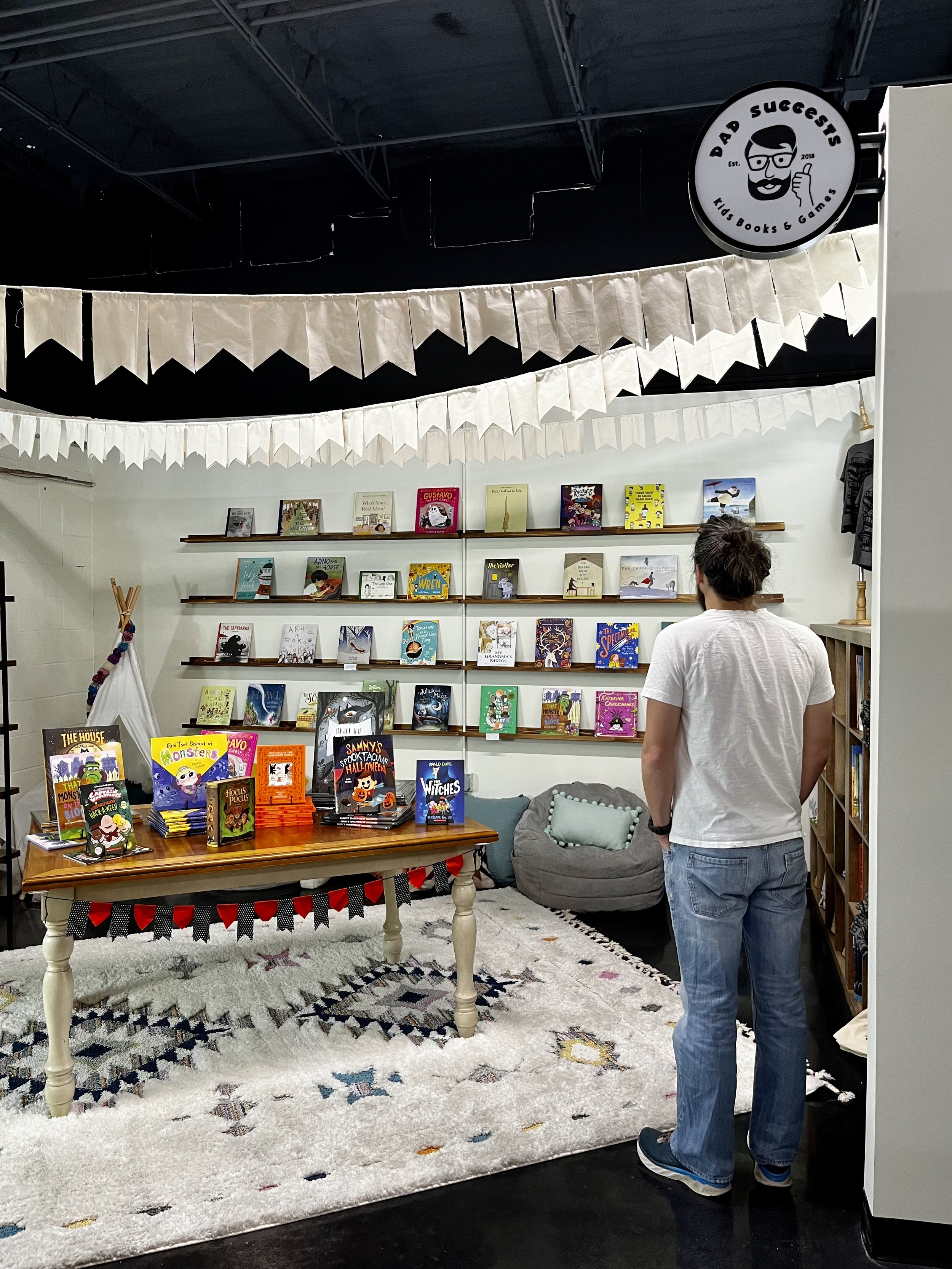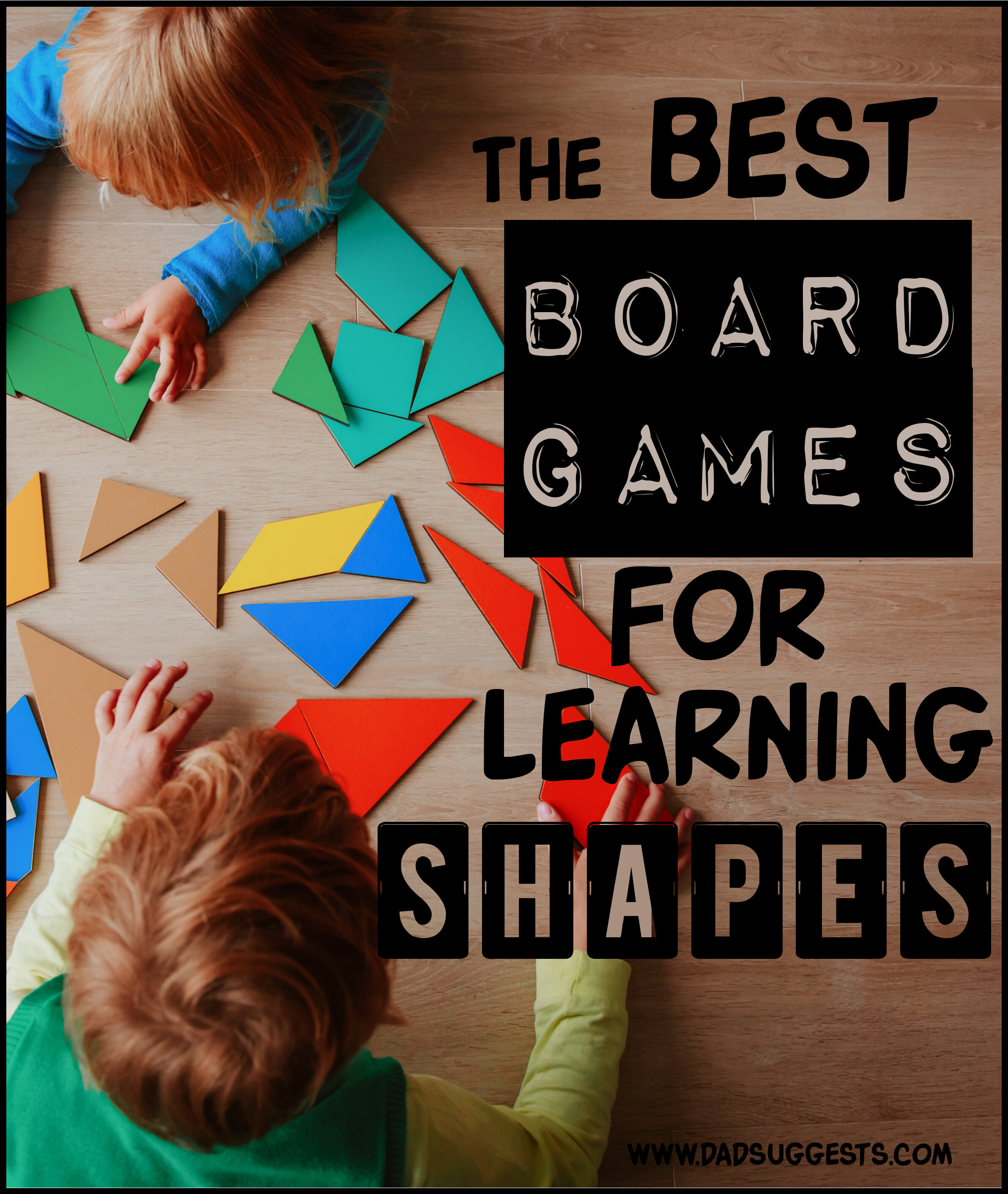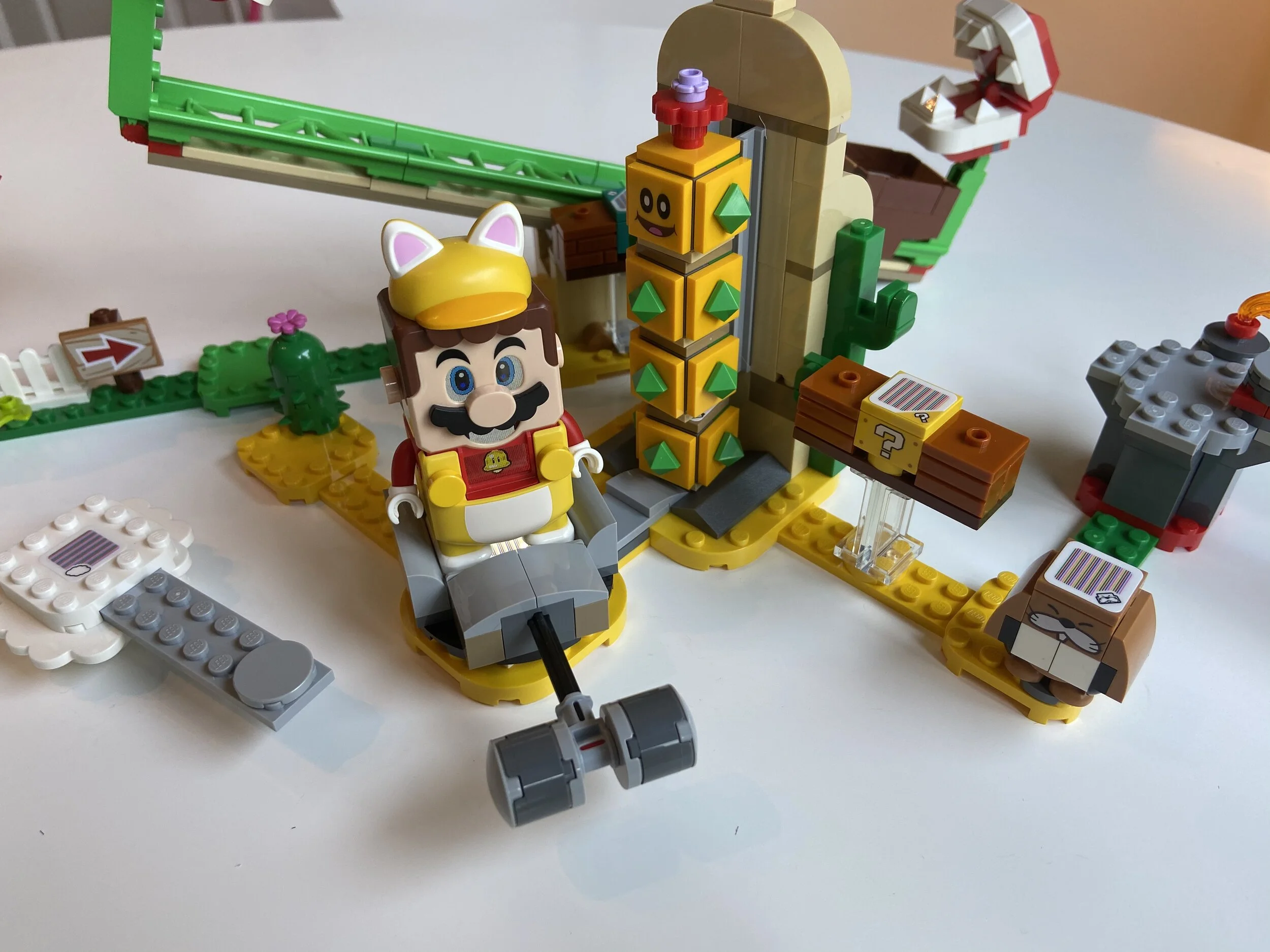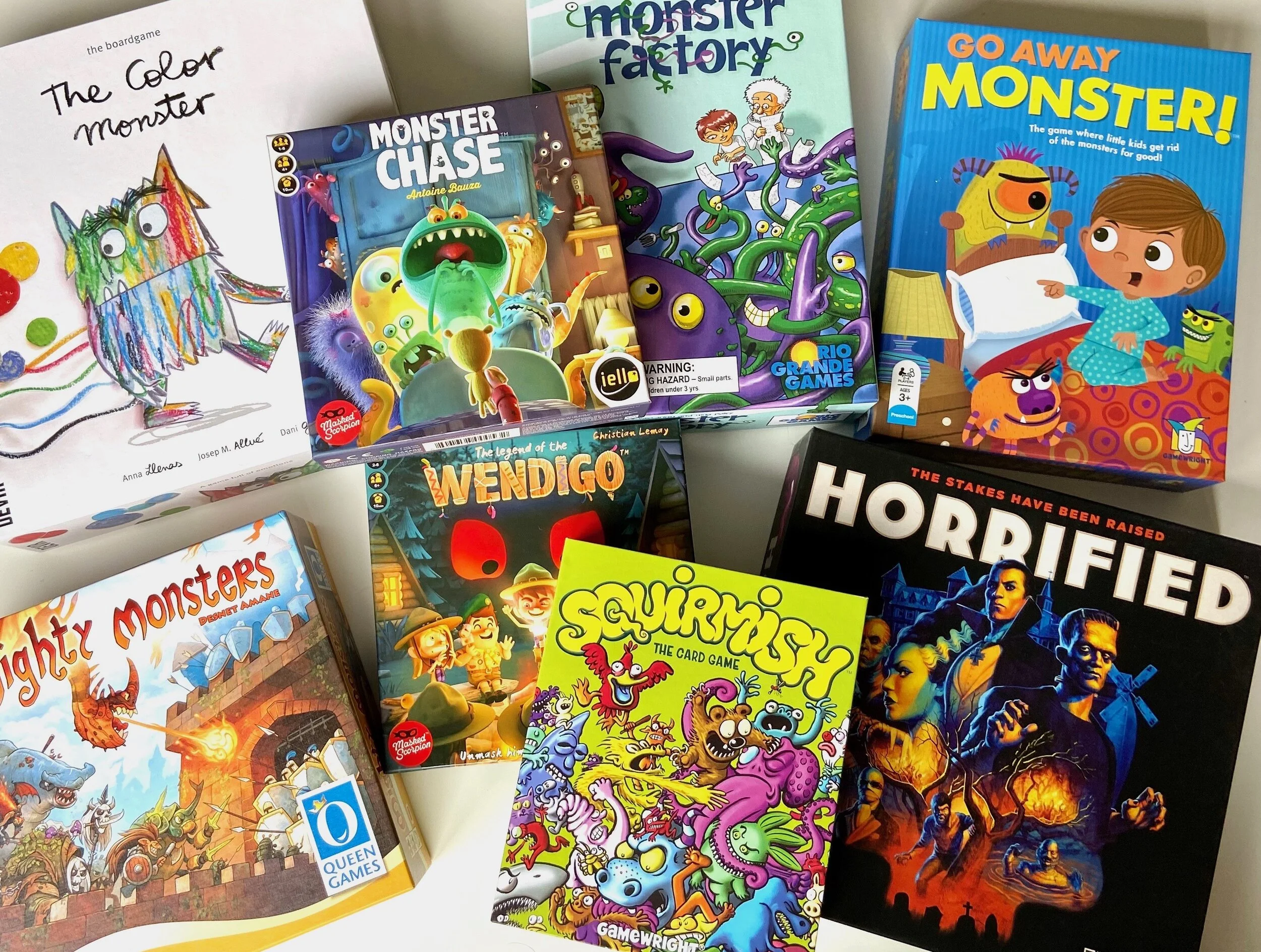The Best Board Games for Learning Shapes
The popularity of high-quality board games for children has been trending upwards lately. And this summer in particular seems to have seen a real bump in interest - perhaps because of the widespread quarantining during the global pandemic, and the uptick in parents choosing to homeschool their children this upcoming year.
With all of the extra built-in family time, many people are seeking out meaningful ways to spend time together and entertain everyone - while also simultaneously embracing every chance to get some educational benefits out of the activities. And this makes board games a very natural choice, because the educational benefits are actually quite vast.
Of course this is why there’s an entire branch of homeschooling known as “gameschooling”. Games engage children very naturally, and it’s getting easier and easier to find games that teach or reinforce almost any subject. And since more parents are choosing homeschooling this year than ever before, or at least some sort of virtual learning plan where the kids are still at home, there’s no better time to explore the possibilities of learning through play.
Some of the most universal and well-known skills that playing board games will develop are logic, memory, and planning - but one of the more overlooked benefits is reinforcing basic knowledge like counting or identifying shapes and colors. In my opinion, having the opportunity to repeatedly practice these basic skills in a fun setting is the best part of gameschooling with very young kids.
In this article I want to focus on family board games that help kids practice identifying various shapes. Our daughter is currently 4, and all of the games on this list are beloved family favorites that are still serving us well to this day. One interesting thing about this list, and other gameschooling lists we make, is that we don’t have many purely “educational” board games in our personal collection. What that means is that these are high-quality, entertaining family games first - and that they very slyly and naturally reinforce skills and concepts as a side benefit.
In our series of gameschooling articles, we’ve already taken a close look at games that help children with their colors, and the nice thing is that some of these games could actually work on both lists, which is certainly very useful. And, like that list, the main focus of this article is certainly on younger children, but I think you’ll also find that these games can entertain older siblings and even adults just as well.
I hope that this newest addition to our gameschooling collection proves useful and helps you find a new favorite game. And I hope it helps you discover that gameschooling can definitely help the little ones in your home or your classroom keep learning and thriving.
Disclosure: Some of the links in this article are affiliate links. Clicking on those links will lead you to view the games’ listings on Amazon.
5. Snug as a Bug in a Rug!
Published by Peaceable Kingdom and Designed by Peggy Brown
Snug as a Bug in a Rug! is a very useful game to have for gameschooling, because it’s designed to be played in several different ways. You can use it to practice shapes, numbers, colors, and even the difference between big and small. And you can mix and match all of these possibilities too, which is really brilliant and makes it a great educational tool.
This game was also published by Peaceable Kingdom, which you probably know is a publisher we think very highly of that focuses on cooperative games for young children. That means you’ll be working together as a family, and you can decide just how much you need to be of assistance.
With very young kids, probably even as young as 2, you can simply spin the spinner and try to find bugs with matching shapes. But you can also increase the difficultly as kids get older, and you can require that the bugs you find match the right color and shape - or maybe even have the right number of shapes on their back. I always like it when games have different difficulty levels, because it makes games last much longer, and helps appeal to older siblings as well.
4. Go Away Monster!
Published by Gamewright and Designed by Ann & Monty Stambler
Go Away Monster! is one of our 4-year-old’s very favorite board games. Ultimately there are maybe 5 games total that she pulls from the shelf over and over and over again - and Go Away Monster! is definitely one of them. And I think it’s likely because of the very adorable art and the great monster theme.
The concept is very simple. Everyone has a bedroom and you are trying to complete your bedroom with various objects - like a bed or a teddy bear. You reach into a bag and grab an object. If it’s something that your room needs then you keep it and place it in your room. But if it’s a monster, you basically just lose your turn.
Many of the shapes in Go Away Monster! are actually irregular shapes, but I included it on this list because the skills you learn are incredibly useful. Children practice feeling these shapes with their fingers, counting the sides without looking at them, and building a visual of what it might look like in their mind. The picture frames are ovals and the beds are kind of like rectangles - but the real benefit here is the tactile practice of feeling shapes, feeling and naming their differences, and comparing them to each other.
3. Snail Sprint!
Published by HABA and Designed by Marie & Wilfried Fort
Snail Sprint! includes classic triangles, squares, stars, and circles - and it throws in a flower shape and a clover for good measure. It’s also one of the games on this list that lets kids practice their colors at the same time, because we’re always mentioning the colors of the snails, and you’re going to be naming your shapes and colors very often.
Every single turn you roll two dice with colors and shapes on them - so the repetition and the practice is strong with this one. Snail Sprint! is a snail racing game with a brilliantly creative game board. When you put it together, you actually use the metal box the game comes in as part of the race course that the magnetic snails will climb up and down.
The general idea is that you have certain snails that you are rooting for, and the better they do in the race the more points you score. So when you get the chance to move those snails closer to the finish that’s what you try to do. Both of our kids really enjoy this racing game and I really love how creative the setup is.
2. My First Castle Panic
Published by Fireside Games and Designed by Justin De Witt
My First Castle Panic is one of our favorite kids games ever made, and you’ll find it on our list of games that teach colors, as well as the best games for 3-year-olds. I sing my praises about this one quite often, because I love the theme and the mechanics, and because the whole family likes playing it together an awful lot.
This is a cooperative game where you are trying to defend your castle from the attacking goblins. Slowly they creep closer to the castle each turn, and you have to use your cards to fight them back. The cards you play have to match the squares that the enemies are standing on, and that’s where practicing your shapes and colors comes into play.
If a goblin is standing on a blue circle, you have to play a blue circle card. If they are standing on a red triangle, you have to play a red triangle, and so on. There’s no doubt that your kids will have squares, triangles, and circles mastered, as well as the colors blue, green, and red, because basically every turn you’ll be saying something like “I need a blue square or a red circle, does anybody have a blue square or a red circle we can use?”.
1. Drop It
Published by Kosmos and Designed by Bernhard Lach & Uwe Rapp
Drop It is a fantastic game that’s quick to play and very enjoyable for the entire family. But it also has one of the most head-scratching recommended ages I’ve ever seen. Officially the game is recommended for ages 8 and up, but our 4-year-old plays the game perfectly independently - including counting out her own points on the scorecard and everything.
This is a competitive game where you drop your shapes into the game’s drop zone (imagine a Connect 4 kind of contraption, except your pieces can go left and right and slide around). Basically you don’t want your shape to touch another shape of the same color, or of the same shape. If you follow those rules then you score points for your drop.
It’s simple and involves an element of skill - but it’s also chaotic and unpredictable how the game will play out. And that tends to add up to a game we like to play over and over again. While playing you’ll get to practice the names of circles, squares, and triangles, and, as an added bonus, your kids might learn the word rhombus for the first time ever.
What are some of your favorite games that help you practice shapes? Have you played any of the games on our list? Let us know in the comments!













